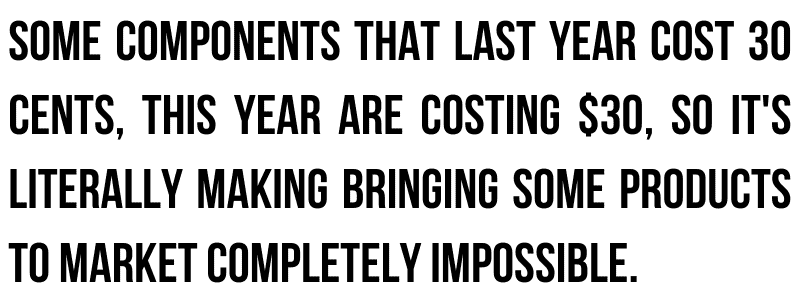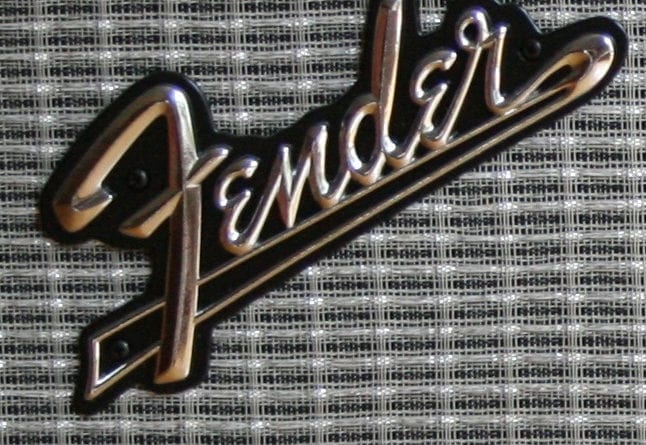We’ve been hearing about “guitar dying” and “rock dying” for a while now. However, in 2020 when the COVID lockdowns started, guitar sales went through the roof. In fact, that’s when Fender recorded the best year ever in terms of sales numbers.

However, things on the market are super-turbulent. Supply chain issues hit pretty much all industries one way or another and the same goes for big and small guitar brands. While chatting recently with Music Radar, Fender CEO Andy Mooney discussed this ongoing issue. Asked whether this affects the way he and the company plan ahead, he explained a very clever and assertive way they’re dealing with it:
“A new programme we recently communicated to our dealers is a six-month futures programme. If you as a dealer commit your order to us six months in advance you get guaranteed price no matter what happens due to currency or cost pressures, and you get prioritised delivery. During a period of rampant inflation, currency volatility and on-going supply chain challenges, we felt this would be a real benefit to dealers.
“We’d like to offer guaranteed delivery as well but there’s too many supply chain challenges to honestly commit to that, but certainly prioritised delivery. In exchange, we’re offer retailers a significant increased margin opportunity. So we’re trying to connect the dots across the supply chain to make it beneficial for the retailer, make it more predictable for us to plan.”
Asked whether any demands from the customers surprised him, he answered:
“If you go from Custom Shop to Squier, surprisingly every single segment grew. But the segments that grew most aggressively were the extremes; the opening price points and Custom Shop. think that people who had time and money said, ‘Well, now is the time for me to place an order for a Custom Shop guitar.
“People who wanted to spend or [use the] sudden benefit of time they had at home, said, ‘Now’s the time to learn how to play guitar’, whether it’s acoustic or electric. While we saw growth across the board, most of the growth came from the low end.”
Elsewhere in the interview, he was also asked whether there are any components that are “causing concerns,” Andy said:
“I could spend the next hour listing that. There’s concern across the board. Some components that last year cost 30 cents, this year are costing $30, so it’s literally making bringing some products to market completely impossible.
“[Mustang] Micros are a good example. We’re going to be challenged to get component parts at the level we’d like going forward. So we’re always trying to pivot to find other suppliers. Internally, we refer it to Whac-A-Mole, because you feel like you’ve just solved one supply chain issue, from a component point of view, and then something else rears its ugly head. So I think we’re going to be facing electronic component shortages at least through 2022, and probably into 2023, maybe even longer.”
And for the final question, he was asked about his favorite Fender model, to which he replied:
“My go-to guitar is the Jim Root signature Jazzmaster because that’s kind of what I know. It was so funny. Jim was in the office before we had made that guitar and I was already playing his signature Telecaster at that time and my band was going to do a cover of [Slipknot’s] The Devil In I and he just happened to walk into the office. I said, ‘Jim, this song is in Drop A. How the hell does your guitar tech setup your Tele to get it down to drop A.’ He said, ‘He doesn’t do shit – he just tunes it to drop A and it works.’ So I did and it worked. So anything that has me down in those kind of tunings, I go to one of his two signature guitars and I need the fixed tailpiece because you can’t have anything that’s floating with those type of tunings.
“If I want to do something that’s got any type of whammy on it I actually go to Tom Morello’s signature Strat because I’ve got everything; I’ve got a kill switch, I’ve got a Floyd Rose and a rosewood ‘board. I’ve got a high output pickups – it’s perfect for me.
“And then if I’m in more of a kind of bluesy mode, before I joined the company and I was fortunate to buy them at the time I bought them, but I’ve got a ’52 Tele and a ’54 Strat. So when I’m in a bluesy mode I kind of go back back to the archive and most often play the ’54 Strat because I grew up with Strats and never really understood the Tele until recently.
“I’ve kind of come to the Tele [later] because it was never really in my in my repertoire. But the guy that got me into the Tele was Chris Shiflett. Because when I saw what he was doing with it I picked it up. Again, it has humbucker pickups just kind of did the job.
“So it depends on what night but it’s great. But we’re just returning the collection back to the office. I had 60 guitars before I joined the company so I’ve got about 100 now. In the long hallway where my where my office is, although I haven’t been there much of the last couple of years, we have the collection display because it represents our history.
“I’ve got 1950 lapsteel and guitars that are really great and some that are not so great from the CBS era. I have them because it’s important, to see the lineage. I encourage everyone to pick them up and play them – it’s not often you get to play a ’52 Tele. Plug it in and you’ve played a piece of history there. So it’s great that people have access to those guitars.”
Photo: Jud McCranie (Fender tailed logo)


